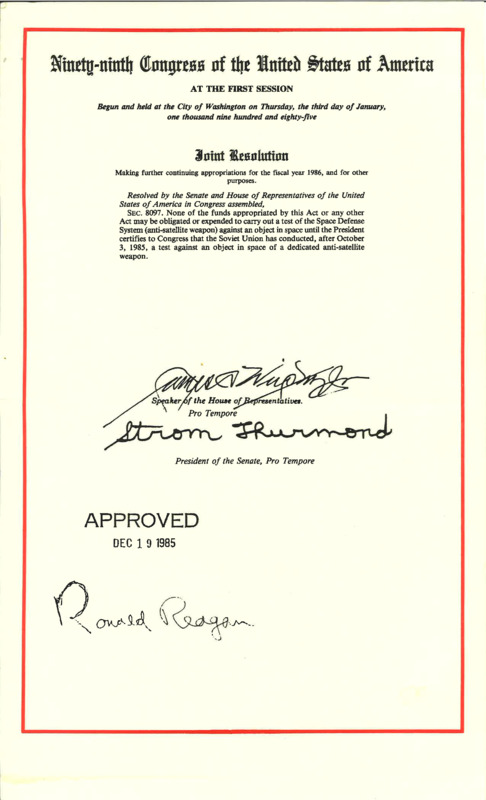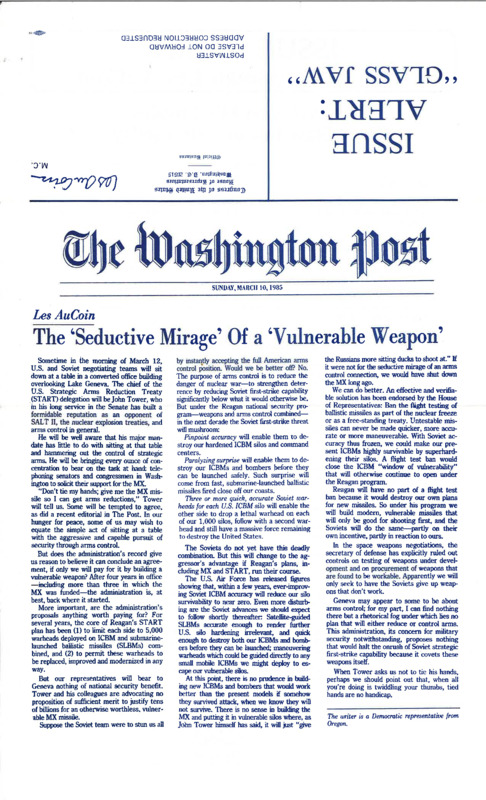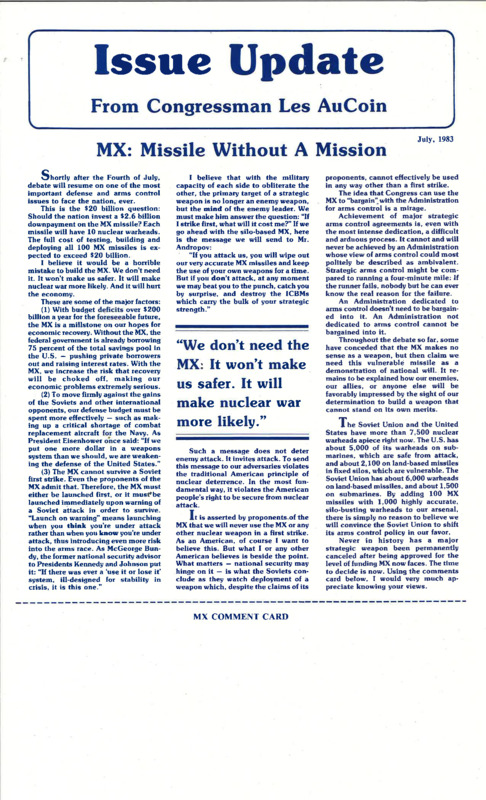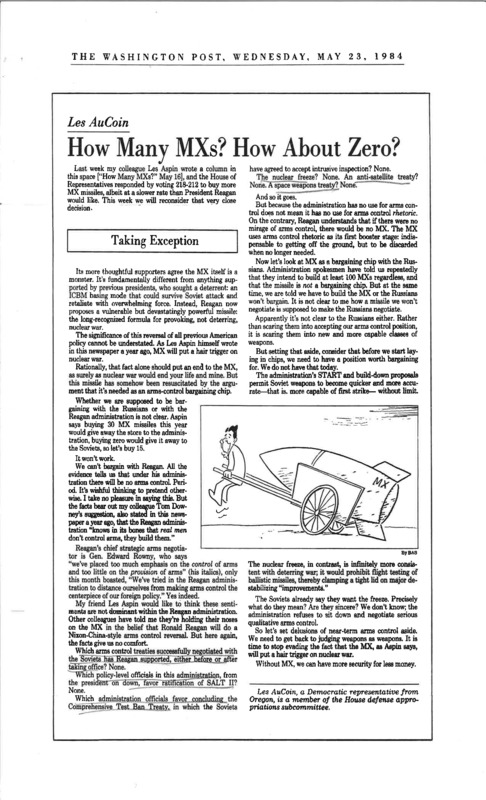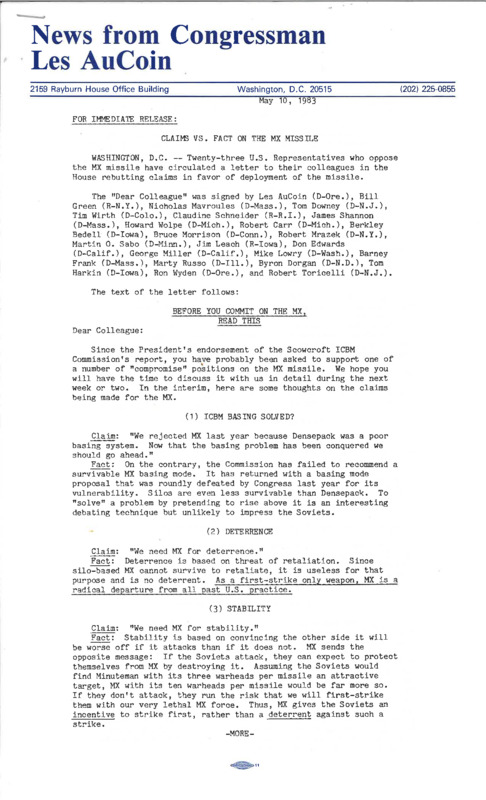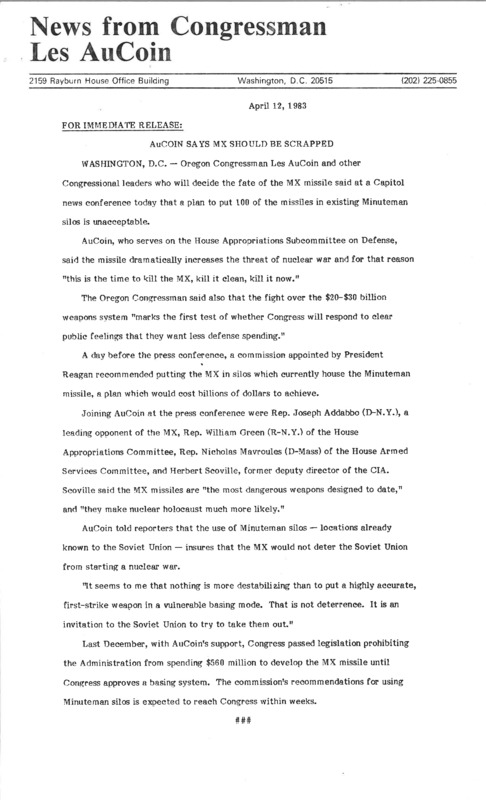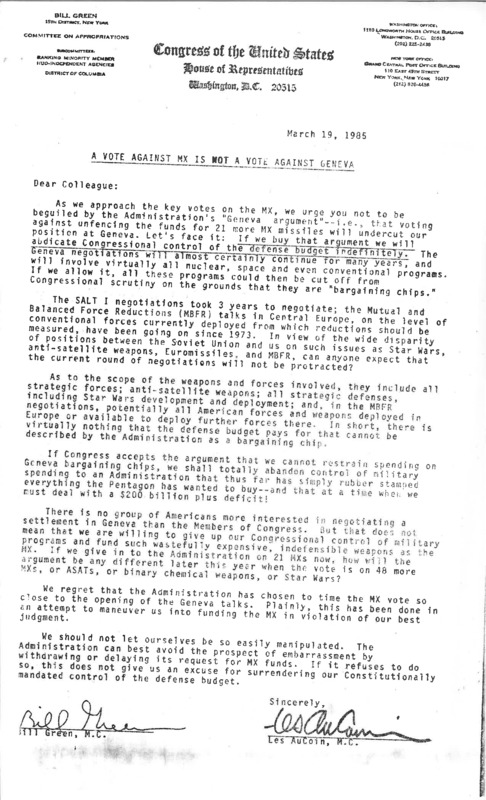MX Missiles
AuCoin was a vocal critic of the MX missile introduced by the Reagan administration. The MX, which stood for "Missile, Experimental" and was later called “Peacekeeper”, was a first-strike, intercontinental missile introduced in 1985. Each MX missile could carry ten warheads, each with three-hundred-kilotons devices. By comparison, the atomic bomb dropped on Hiroshima in 1945 was a 15 kiloton device.
The Reagan administration initially called for hundreds of these missiles to be deployed in the US, but they met fierce opposition from the nuclear freeze movement. AuCoin argued that deploying a large number of MX missiles would be a destabilizing factor in the Cold War, driving the Soviet Union to further develop their own first strike weapons. In 1985, Congress limited the number of MX missiles to be deployed at 50, citing the rising expenses and budget concerns. While the decision did not end the MX missile program, it did prevent deployment of any additional missiles. In 2005, MX missiles were finally withdrawn from service as part of disarmament treaties.
Strategic Defense Initiative
AuCoin was also a critic of the Reagan administration's proposed Strategic Defense Initiative (SDI). When first proposed in 1983, the SDI was a defensive system intended to protect the US from attacks involving nuclear weapons. Initial discussions outlined lasers, particle beam weapons, and space-based missile systems, earning SDI the mocking nickname of “Star Wars” among critics.
AuCoin strongly opposed the SDI, arguing that it would likely reignite an arms race and encourage the Soviet Union to strike the US while the SDI was developed. Furthermore, he argued that even if the US successfully established the SDI, probability theory showed that it could not fully defend every attack. Nevertheless, the Reagan administration insisted on pursuing the SDI, establishing the Strategic Defense Initiative Organization in 1984 within the Department of Defense to manage its development. By 1987, the American Physical Society concluded that even if such a system were feasible, the technology required was decades away from being functional. As the Cold War came to an end in the early 1990s, the SDI lost support, and the Clinton Administration officially ended the program in 1993.


